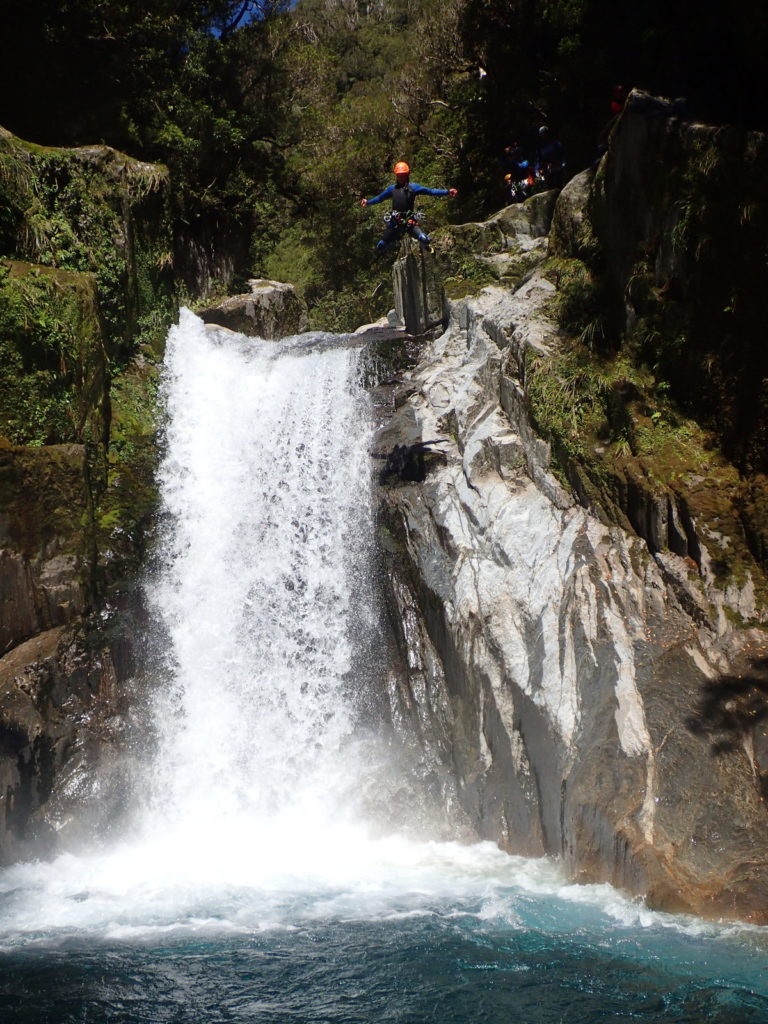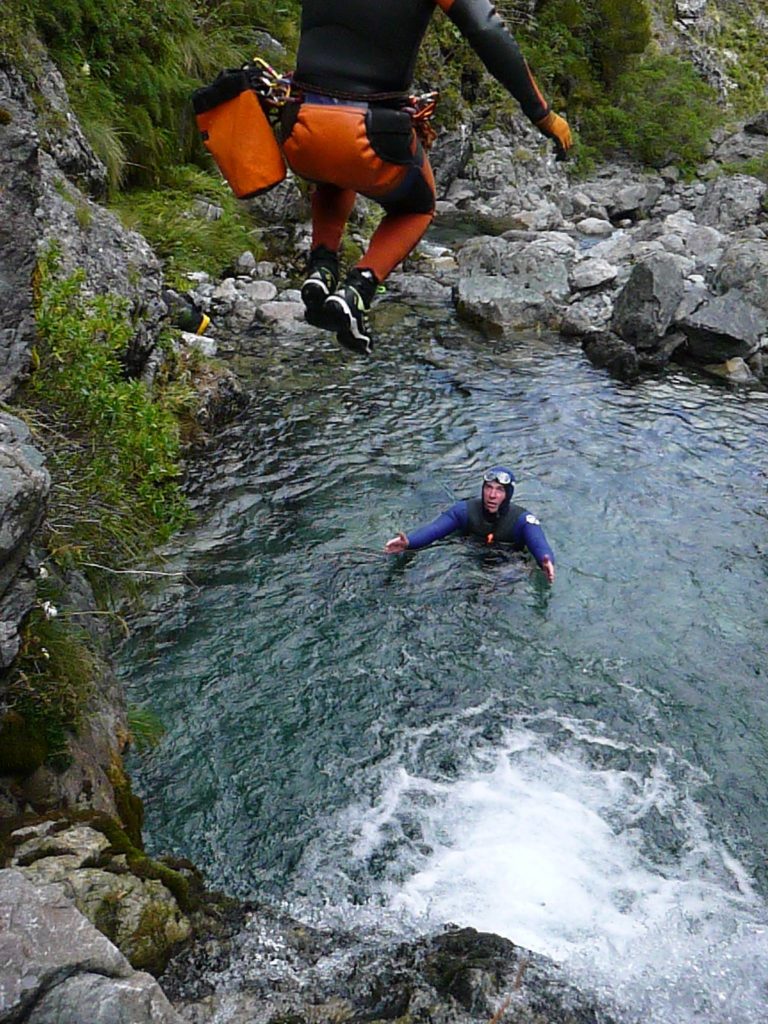
I reckon jumping is probably one of the top causes of injury when canyoning. Which is a bummer, because jumps are probably my favorite activity in a canyon.
I heard of a recent minor incident on a canyon jump, and it jogged my memory to a few other near misses. I thought it’d be worth a few words to maybe help others avoid the same perils.
Jumping is a team activity.
The team consist of the jumper, and the pool checker. Although there are some circumstances when you might be tempted not to check a pool before jumping (sunny day with good vis to the pool bottom, very clear water, familiar canyon, small jumps) you are taking an additional risk.
A stick pointing straight up from the bottom of the pool will be next to invisible from the jumpers perspective. When the pool bottom isn’t bedrock (ie, it is gravel, sand, small boulders) its pretty common for the depth of the pool to change between high water events. Depending on the clarity of the water, nature of the pools bottom, angle of the sun etc, there can be some very confusing optical illusions that might make the pool appear much deeper than it really is.
I’m reminded of a trip through Pheobe Creek with Nic Barth many years ago. We got to the top of what looked like a jump of about 3m. The pool looked really deep and clear, so we agreed to just go for it. Imagine our surprise when Nic stood up in the pool, and the water only came to his waist…. The gravel bottom which had fooled us was also our saviour; we did hit the bottom (pretty firmly) but the bottom had some give in it. Fortunately he had a defensive landing position, with feet and legs ready to take an impact on the pool bottom, so we were able to carry on. Now back to the team thing..
Whenever there is the slightest doubt in your mind that the pool is definitely deep and clear of obstacles, then you must check it out. The checker rappels or scrambles down to the pool, puts on their diving mask and has a good look in the pool for depth, bottom character and obstacles (sticks/boulders). The checker then clearly indicates the safest landing zone with previously agreed hand signals, and reports back to the jumper “3 meters deep, onto bedrock” The jumper then makes the informed decision wether or not to jump, where to jump, and what body position to land in. (Pin drop, bomb, banana, armchair…). If there is hazard in an otherwise good pool (such as a boulder, bedrock lip, or tree), then the checker should stand on it, or ‘hover’ over it whilst treading water. It provides a physical and visual barrier to jumping in the wrong place.

So its clearly a team effort. The jumper has to trust the checker completely to check the pool well and give the right information. The checker has to trust the jumper to make a good decision based on the information and their jumping skill, wether or not to make the jump.
If that trust is broken, the next thing that could get broken is your leg, or hand, or back.
If the jump is so big that the jumper can’t hear the words of the checker then the pool obviously has to be plenty deep enough that it doesn’t matter. Big jumps into shallow pools and/or small landing zones is expert territory, and comes with significant risk.
The dangers of having too much fun with experienced folks
Jumping is a bunch of fun, and when there are plenty of jumps, its really easy to get carried away and not check pools or not commicate clearly to jumpers.
The checker must stay at the pool to indicate the correct landing zone, depth, bed surface, and cover any obstacles for all of the jumpers. In essence, the checker becomes the ‘pitch manager’. Just like when using ropes from the top of a drop, for efficiency and safety the person to rig the pitch, stays at the anchor and manages the pitch whilst everyone in the team descends.
I’ve heard more than a few stories of near misses and injuries caused on jumps, where the checker has left the landing pool, and the jumper has jumped in the wrong place. This seems to have been more common with ‘experienced’ groups, and with groups where the members don’t know each other well.
Remember, jumping is a team activity; just like the checker has a responsibility to check, communicate and indicate, the jumper has a responsibility not to jump unless they are certain they understand the pool and have the skill to make the jump safely.
Breaking a leg (or worse) sucks for everyone. It sucks for the jumper, it sucks for the person who was supposed to check the pool, it sucks for the rest of the team who now have a rescue on thier hands, it sucks for your family and friends back home who needed you to be fit and healthy and it certainly sucks for any SAR team/Rescue helicopter who now have to come and get you…
This is just a couple of small aspects of the art of jumping in a canyon. There’s lots more detail and depth (excuse the pun) in the Canyoning Technical Manual from OTE rescue.







